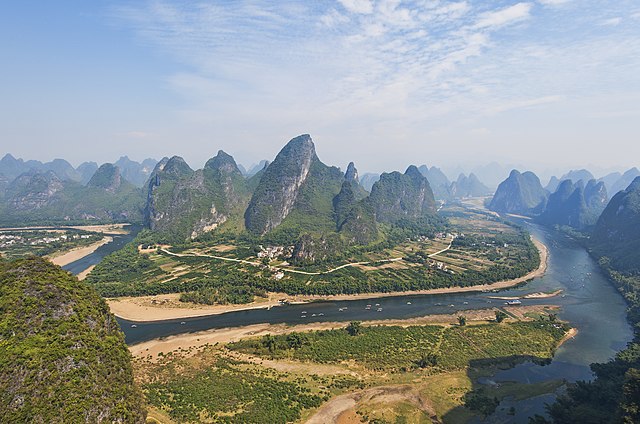A beach is a landform alongside a body of water which consists of loose particles. The particles composing a beach are typically made from rock, such as sand, gravel, shingle, pebbles, etc., or biological sources, such as mollusc shells or coralline algae. Sediments settle in different densities and structures, depending on the local wave action and weather, creating different textures, colors and gradients or layers of material.
Recreational beaches, such as this one in Fort Lauderdale, Florida
St Oswalds Bay, Dorset, England. Wild sand and shingle beaches are shaped and maintained naturally by wave actions.
Marine debris on a beach in Hawaii.
Quartz sand particles and shell fragments from a beach. The primary component of typical beach sand is quartz, or silica (SiO2).
A landform is a natural or anthropogenic land feature on the solid surface of the Earth or other planetary body. Landforms together make up a given terrain, and their arrangement in the landscape is known as topography. Landforms include hills, mountains, canyons, and valleys, as well as shoreline features such as bays, peninsulas, and seas, including submerged features such as mid-ocean ridges, volcanoes, and the great ocean basins.
This conical hill in Salar de Arizaro, Salta, Argentina called Cono de Arita constitutes a landform.
Panorama of Great Smoky Mountains National Park showing physical features of a rolling plain, actually part of a broad valley, distant foothills, and a backdrop of the old, much weathered Appalachian mountain range
Karst tower landforms along Lijiang River, Guilin, China







